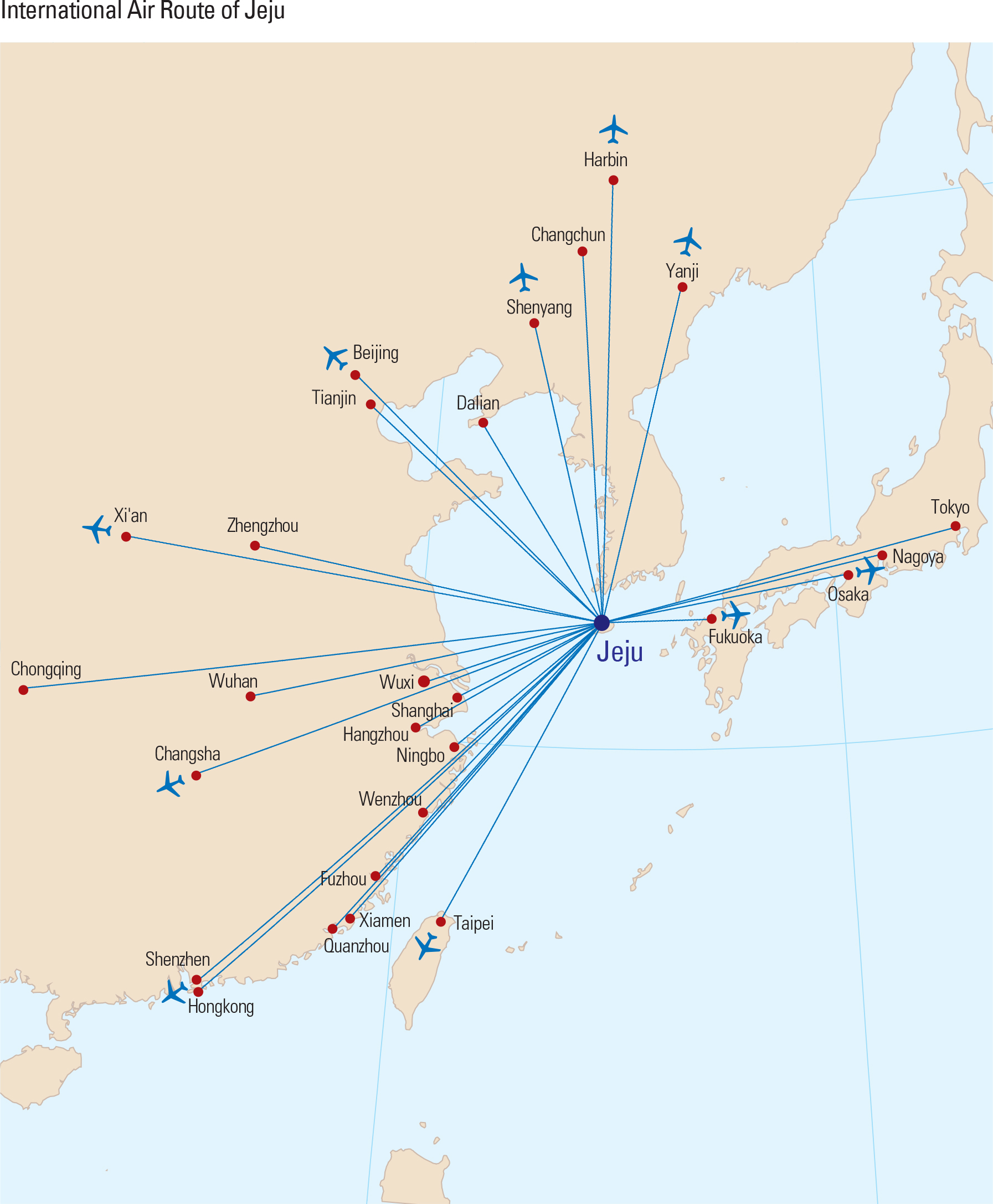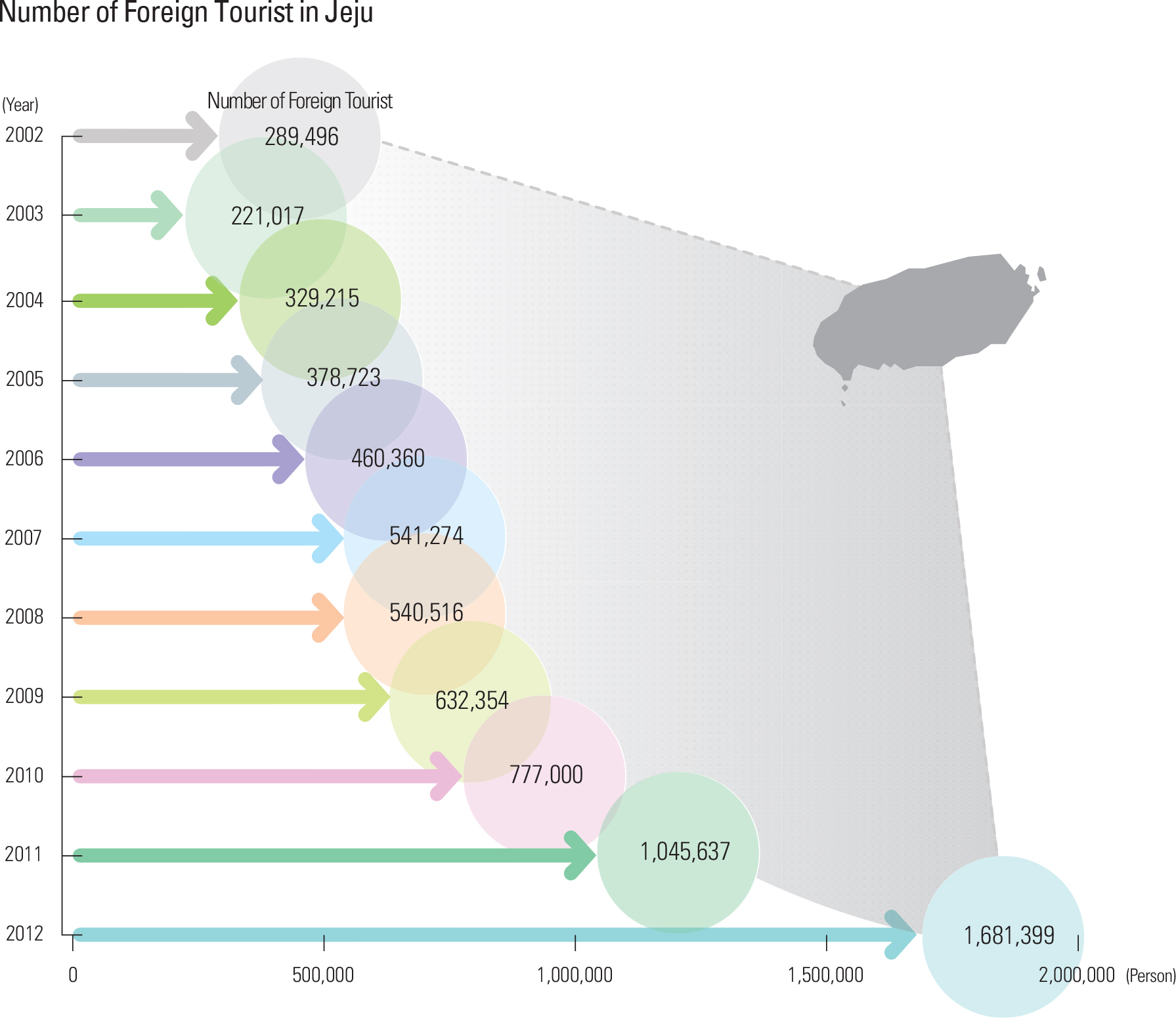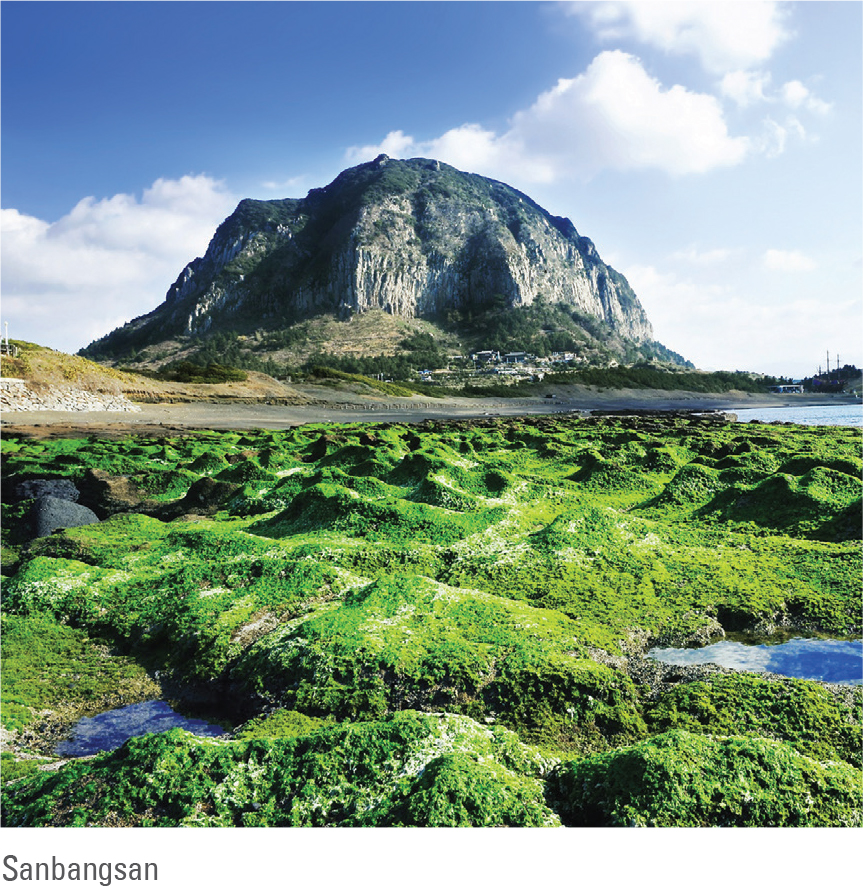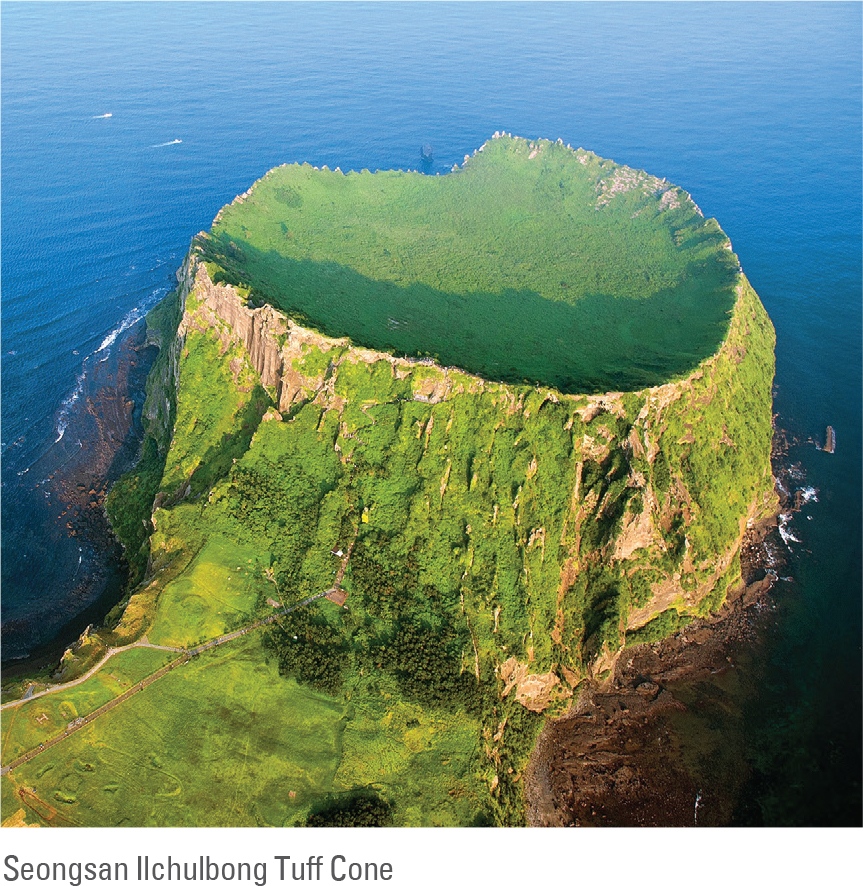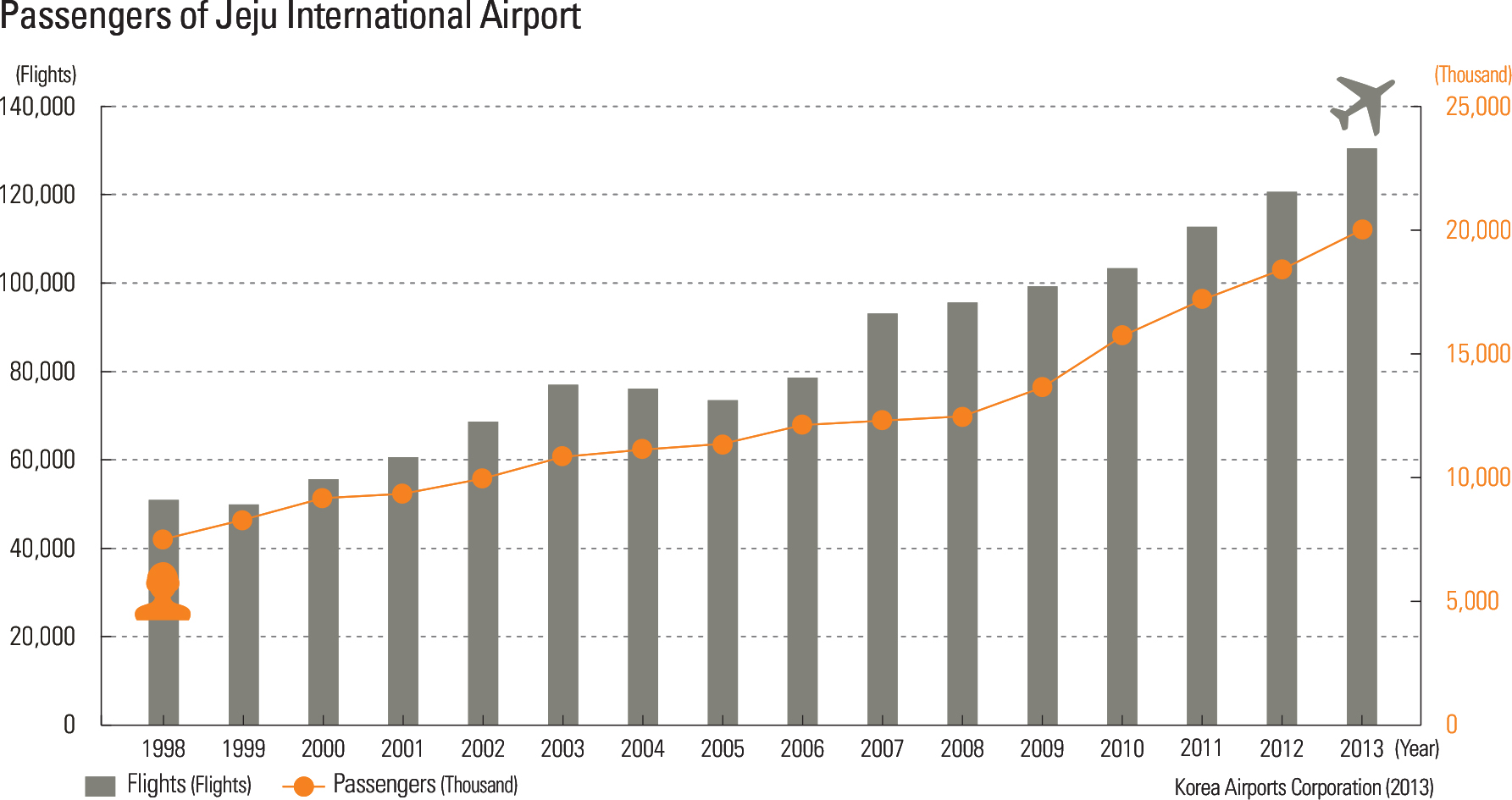Jeju is the largest island in Korea and is known for its beautiful natural landscape and unique cultural heritage; these attributes attract large numbers of tourists. Jeju Island was created from volcanic action and is characterized by a volcanic topography, such as Hallasan, numerous parasitic cones, and caves. Because of the ecological and environmental value of Jeju, the island was designated as UNESCO Biosphere Reserve in 2002 and as a World Natural Heritage in 2007. Jeju was also certified as a Global Geopark in 2010.
The island’s well-preserved natural environment and a unique ecosystem made it an ideal location for various leisure and recreational facilities. Because numerous tourists visit the island every year, the Seoul (Gimpo)-Jeju airline route is one of the busiest air routes in the world. The island is becoming a well-known international tourist destination for an increasing number of foreign visitors, including large numbers of Chinese. Jeju became the first Special Self-governing Province in 2006 with the goal of facilitating regional development that focuses upon unique regional attributes. There is also a plan to build an international city to facilitate free trade. Unlike any other provinces, the Jeju Special Self-governing Province belongs to a category that has a high level of guaranteed autonomy. Specifically, with autonomous decisions to implement administrative deregulation and the bold introduction of international standards, the island is now attracting foreign visitors, investors, and immigrants, thus ensuring free enterprise. After the launch of this Special Self-Governing Province, foreign investment has increased, and many foreign educational institutes have been established due to streamlined regulations. At the same time, Bukjeju-gun was merged into Jejusi, and Namjeju-gun was integrated into Seogwipo-si.
